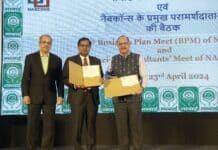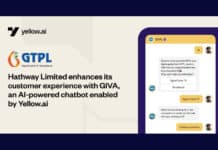In this exclusive interview with CRN India, Amit Srivastava, General Manager, Rakuten SixthSense, delves into the company’s growth within the Indian market and its diverse portfolio offerings. Established initially as a technology centre, Rakuten SixthSense has evolved into a pivotal hub for product engineering and research, supporting global operations while investing in India’s startup ecosystem. The interview explores the development of Rakuten SixthSense and its success in penetrating enterprises over the past two years. The conversation also touches upon strategies for harnessing customer data effectively and Rakuten SixthSense’s partnerships and initiatives aimed at building competencies and capabilities within the partner ecosystem.
Could you provide an overall view of the growth of your India business, particularly in the context of the different portfolios you offer?
In the global perspective, our presence in India as a 100% owned subsidiary has evolved significantly. Initially established as a technology capability centre, our office in India now serves as the primary Technology Centre for our group companies worldwide, including support for global operations such as those in Japan and the US. Over the years, we’ve transitioned from being solely a delivery centre to a hub for product engineering and research.
Regarding our business strategy in India, while we haven’t directly entered the e-commerce market, we’ve been investing in the startup ecosystem, particularly in B2C ventures. Notable investments include rewards program companies and e-commerce ecosystem companies. Our focus remains on evaluating market conditions while fueling our primary markets, especially in Japan, which continues to experience double-digit growth.
In India, our B2B operations include RapidInsights, a market research company focusing on panel-based data research, Rakuten Symphony, a telecom-specific development and engineering organisation, and our latest venture, Rakuten SixthSense, an IT observability solution launched from India. Our commitment to strengthening our presence in the Indian market involves leveraging channel ecosystems and emphasising the role of technologies like Rakuten SixthSense, which offers comprehensive observability across various facets of IT infrastructure.
What prompted the development of Rakuten SixthSense for the Indian market, and how successful has it been in penetrating enterprises after two years?
Rakuten SixthSense is not a standalone company but rather a product under the umbrella of Rakuten. It serves as a brand within the larger organisation’s structure. Many of our business operations follow a similar model, where a brand is associated with a specific company within the Rakuten group. The decision to develop Rakuten SixthSense stemmed from the necessity to streamline and optimise our operations. Given our substantial revenue, approximately $20 billion, and the digital nature of our businesses, technology plays a critical role. Whether it’s e-commerce, telecommunications, or financial services, our operations rely heavily on software and digital infrastructure. In fact, nearly 75% of our operations are technology-driven, highlighting the integral role that technology plays in sustaining our business across various sectors, including banking, credit cards, securities, travel, and leisure experiences.
Take us through a few, notable success stories in the Indian market?
Yes, we have a diverse range of customers using our services. One notable example is Shahi Exports, a prominent apparel manufacturing organisation. Additionally, we serve other sectors such as housing finance. Notably, the National Informatics Centre (NIC), which oversees many government applications, is among our key clients. These organisations, ranging from mid to large size, benefit from our solutions, particularly in addressing issues with existing technologies like AppDynamics.
Many customers express dissatisfaction with the diminishing returns from traditional APM solutions like AppDynamics and New Relic, prompting them to seek alternative solutions. Our approach involves leveraging advanced AIOPS technology to address complex issues efficiently. For instance, a media client faced challenges with streaming during high-demand periods, such as sporting events. By integrating our AIOPS layer, we successfully resolved playback and authentication issues, ensuring seamless streaming experiences for their users.
How has the integration of tools like AppDynamics, Dynatrace, and Cisco addressed challenges in infrastructure and application coupling? What measures have been taken to develop a more agile and cost-effective solution, particularly regarding transitions between different environments or technologies?
Yes, indeed, the landscape has evolved significantly with modernisation efforts. We’ve integrated various tools like AppDynamics, Dynatrace, and Cisco into a cohesive platform to address the complexities arising from the coupling of infrastructure and applications, especially with the advent of Kubernetes, cloud, and containerisation. However, while these solutions offer valuable features, they often fall short of meeting all our requirements and lack the flexibility needed for seamless transitions between different environments or technologies. This rigidity poses challenges, particularly when considering future changes or migrations to different cloud providers or technologies.
To address these challenges, we embarked on building a more agile and cost-effective solution tailored to our diverse business needs. This solution aims to provide the manoeuvrability needed to adapt to changes swiftly and optimise costs effectively. Additionally, we observed a surge in data telemetry and associated costs, prompting us to explore more sustainable alternatives.
Our solution, crafted with these objectives in mind, has shown promising results. With a focus on agility and cost optimisation, we’ve managed to streamline operations and enhance scalability. Recognising the similarities between the Indian and Japanese ecosystems, we’ve initiated our journey from India, where we’ve made significant strides in customer acquisition across various sectors, including manufacturing, FinTech, and the public sector.
As we expand globally, we’ve forged strategic partnerships with global players like CGI and are in the final stages of agreements with other major partners. These partnerships underscore our commitment to delivering value through collaborative efforts. Additionally, we’ve engaged with Indian reseller partners and tier-two partners like Sai Infotech to penetrate deeper into the Indian market.
Our expansion efforts extend beyond traditional application performance monitoring (APM) to encompass broader areas within our ecosystem. Our unified Rakuten ID system, which serves as a gateway to various services across our businesses, exemplifies this holistic approach. Leveraging data insights from this ecosystem, we continue to innovate and refine our offerings to better serve our customers’ evolving needs.
What strategies and technologies does your company employ to harness customer data effectively for insights, cost reduction, and external partnerships?
We prioritize understanding customer preferences, leveraging social graphs and buyer graphs to discern user patterns. Over our 27-year journey, we’ve amassed a vast amount of data, facilitating lower customer acquisition costs. This data wealth enables us to offer valuable insights to partners, like automakers seeking target demographics for new products. Our data-centric approach extends to internal operations, with a dedicated team managing complex data pipelines. Despite diverse data sources and systems, we ensure seamless data access and observability. Recognising data’s critical role, we’ve developed a robust data observability solution, initially utilised internally and now available externally as a modular service.
Are your product offerings available As-a–Service for customers?
Yes, currently, there are three products available as a service. Rocket and SixthSense application observability were already launched two and a half years back. Now, we are launching Data Observability, which is a parallel service but for data engineers. On top of that, there is a CognitiveAI, which you can think of as an AIOps service. It can process any kind of data, including time series data and events, and provide quicker mean time to know, to detect, and forecasting.
I talked about one use case, anomaly detection, which is of course, part of that. Correlation is something everyone talks about, but fully addressing correlation, and the hardest part, causation, is what we are focusing on. Whatever people say, the root cause remains the first-order problem we are solving. So far, most of our users say that we are far ahead compared to any competition in the market, but it’s still early days for results. However, our coalition will continue to build, adding more features into that. Our financial roadmap towards this is very robust. Towards the second part of this year, we will move into more federated ML LLM-based models to provide a little more personalised insights depending on the customer’s specific IT landscapes.
As part of our cognitive AI model, our next direction involves incorporating private LLM. This will enable us to provide more personalised outcomes. For example, within our internal knowledge base, known as “tramps,” we continuously document various issues encountered by our command centre. Now, we aim to utilise this engine in conjunction with our tramps to deliver the most suitable outcome.
Given our strong focus on AI, everything is progressing in that direction. Therefore, we are aiming to launch an additional product, particularly AI-driven observability, which we plan to make generally available in Q2. However, our first minimum viable product (MVP) will be ready, and we will begin alpha and beta testing starting in March with select customers. We have already identified these customers and have initiated a successful external customer beta program. Some customers have already signed up for it, and we will work closely with them to co-create and co-innovate. By the end of Q2, we also aim to expand our security observability capabilities.
How are you looking to build competencies and capabilities among the partners so that they can not only address the market requirements but also expedite their growth?
One part of building up our ecosystem is through partnerships, where people understand the value we are driving. It’s not just about having a product to resell; it doesn’t work that way anymore. So, we are launching something called Rocket and SixthSense University, a program focused on building capacities and capabilities. We believe that site reliability engineering and data reliability engineering will be crucial for future IT operations. If you don’t have skilled people in these areas, managing will be a challenge.
Initially, our focus will be on building these capacities and capabilities with and for our partners. While some elements will revolve around Rocket and SixthSense, most of the courses will be more generic in nature, allowing our partners to benefit. We’re seriously short on skilled people in IT operations, and as we transition into a new age, we need to solve this challenge together. Our commitment to the partner ecosystem is to provide training across various facets, including data and others. We’re taking a more horizontal approach, focusing on building learning paths for different personas like SREs, data engineers, and Ops personnel. We aim to offer these courses at three different levels with different outcomes tailored to the needs of individuals.
The market has become unsustainable, with costs rising even in places like India. The problem lies in the rarity and fragmentation of skills; people often specialise in one cloud platform, making them ill-equipped for others. We’re attempting to address these challenges within our partner ecosystem by offering mass programs to ensure sustainability and comparability. There’s a lot of work ahead for us, but we’re committed to solving these problems.
Lastly, are there specific numbers you’re aiming to amend within the partner ecosystem?
We already have about 10 partners signed up, more or less, but rather than focusing solely on quantity, we prioritise quality partnerships. It’s essential that any partnership makes sense for both parties involved. However, here are some other interesting points to consider. We organise our partnership ecosystem not just by the number of partners, but by their capabilities. Some partners may not be interested in extensive collaborations but still want to work with us in some capacity, so we welcome them into our referral program. For those who are signing up for deeper collaborations and are deeply involved with us, we categorise them as co-building partners.












